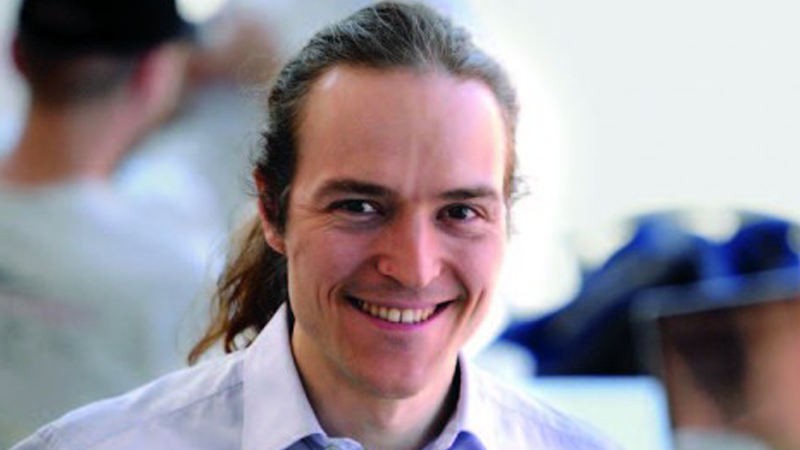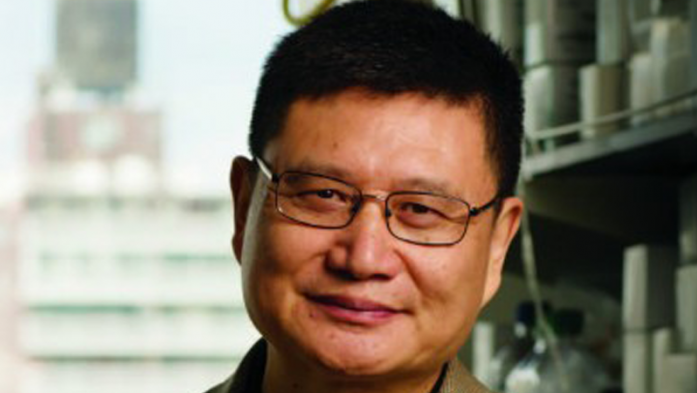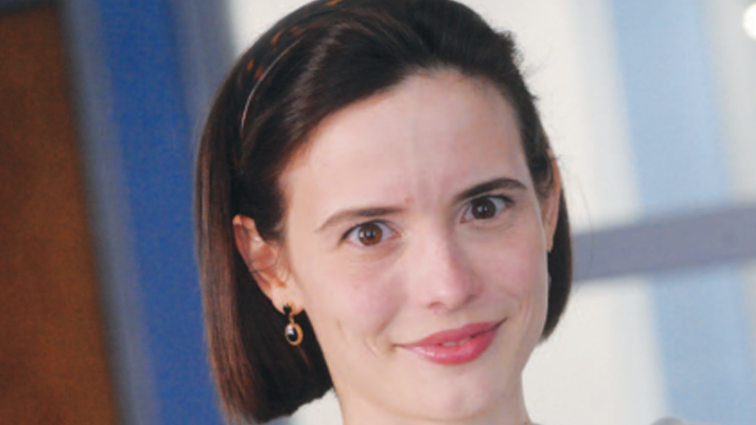Spot News Roundup
Controlling Sound Computationally
Columbia Engineering researchers, with colleagues from Disney Research and MIT, have developed a new method to control sound waves, using a computational approach to inversely design acoustic filters that can fit within an arbitrary 3D shape while achieving target sound filtering properties.
Led by Computer Science Professor Changxi Zheng, the team designed simulated acoustic voxels—small, hollow, cube-shaped chambers through which sound enters and exits—as a modular system that can be connected to form an infinitely adjustable, complex structure. Because of their internal chambers, they can modify the acoustic filtering property of the structure and alter the acoustic result.
“In the past, people have explored computational design of specific products,” says Zheng. “The general approach to manipulating sound waves has been to computationally design chamber shapes. Our algorithm enables new designs of noise mufflers, hearing aids, wind instruments, and more—we can now make them in any shape we want.” The team has also proposed using acoustic tags linked to specific items, opening the door to encoding product and copyright information in 3D printing.
Last year, Zheng’s team used computational methods to design and 3D print a zoolophone, a xylophone-type instrument with keys shaped like zoo animals that represented fundamental research into vibrational sound control.
This year, his team came up with an approach that would enable better manipulation of acoustic propagation for many products, such as automobile mufflers and instruments already mentioned. Their new algorithm enables them to virtually assemble acoustic voxels like Lego bricks into complex structures to produce targeted acoustic filtering properties.
“We are investigating some of the intriguing possibilities of ultrasonic manipulation, such as cloaking, where sound propagation can be distorted to hide objects from sound waves,” says Zheng. “This could lead to new designs of sonar systems or underwater communication systems. It’s an exciting area to explore.”

Working Group Tackles Extreme-Scale Computing
We are now producing data faster than we can process it. To meet this challenge, a group of Columbia researchers has teamed up to address the increasing bottlenecks they face in processing, analyzing, and storing massive data sets.
Frontiers in Computing Systems, the Data Science Institute’s latest working group, convenes researchers developing massive-scale parallel computing systems with those who apply these systems to solve ambitious problems in engineering, medicine, and the physical sciences.
“When you get engineers and scientists together, exciting ideas emerge,” says the group’s founding chair, Steven Nowick, professor of computer science and a member of the Data Science Institute. “Many of the breakthroughs in extreme-scale computing are expected to happen as systems designers come to understand the unique needs of researchers grappling with big data sets.”
Many of the group’s 30 members are already working on hardware and software solutions for handling big data. Nowick focuses on developing “networks-on-chip” to better organize complex data flows among dozens or hundreds of processors and memories running simultaneously within parallel computer chips, while Luca Carloni, associate professor of computer science, is developing embedded “systems-onchip” featuring hardware customized for specific applications. Roxana Geambasu and Eugene Wu, assistant professors of computer science, are adapting software and databases to work with big data. On the application side, Chris Marianetti, associate professor of applied physics and applied mathematics, is working to solve tough equations in quantum mechanics to design better batteries. At Lamont-Doherty, Ryan Abernathey, assistant professor of earth and environmental sciences, is exploring NASA’s new groundbreaking simulation of ocean waves interacting with large-scale currents, which generates overwhelming volumes of data. Other members include neuroscientists, astronomers, physicists, biomedical researchers, civil engineers, and climate scientists.
Approved by the Institute’s board in May, the group hopes to establish a fully fledged center by next year.
Our Driverless Future
Hod Lipson, professor of mechanical engineering, is coauthor of a new book, Driverless: Intelligent Cars and the Road Ahead, with technology journalist Melba Kurman.
Published in September by MIT Press, the book explores how recent breakthroughs in artificial intelligence and robotics are bringing driverless cars from sci-fi to reality, particularly via deep learning software that gives cars rapid and accurate visual perception. Autonomous automobiles are expected to hit the world’s streets within the next decade and set off waves of transformative change in industry, public policy, and how humans live, work, and play.
The technology could unleash another “Apollo moment,” the authors write, if government, industry, and consumers can work together to achieve a safer, cleaner, and more convenient alternative to traditional driving.
Lipson, director of Columbia’s Creative Machines Lab, is an expert on self-aware and self-replicating robots, 3D food printing, and bioprinting. He uses primarily biologically inspired approaches to design, build, and maintain increasingly complex robotic systems, aiming ultimately for machines capable of designing and making other machines.
Lipson and Kurman previously penned Fabricated: The New World of 3D Printing, released in 2013.

Face of the Future
A groundbreaking new technique developed by Gordana Vunjak-Novakovic, the Mikati Foundation Professor of Biomedical Engineering and professor of medical sciences, repairs large bone defects in the head and face with lab-grown living bone precisely tailored to the patient. The method uses autologous stem cells derived from a sample of the patient’s fat to, for the first time, grow living bone that precisely replicates the original anatomical structure.
“We’ve been able to show, in a clinical-sized living model of jaw repair, that this bone, grown in vitro and then implanted, can seamlessly regenerate a large defect while providing mechanical function,” said Vunjak-Novakovic, director of the Laboratory for Stem Cells and Tissue Engineering, codirector of the Craniofacial Regeneration Center, and director of the Bioreactor Core of the NIH Tissue Engineering Center. The study was published in Science Translational Medicine in June.
Her team, which included collaborators from Columbia, Louisiana State University and the Tulane University School of Medicine, fabricated a bone matrix scaffold and custom-designed perfused bioreactor chamber to provide a perfect anatomical fit, enabling bone formation in just three weeks. They discovered that lab-grown bone was gradually replaced by new bone formed by the body.
The researchers are now including a cartilage layer in the bioengineered tissue and conducting preclinical trials through Vunjak-Novakovic’s company, epiBone, as they prepare for clinical trials.
“The need is huge, especially for congenital defects, trauma, and bone repair after cancer surgery,” Vunjak-Novakovic said. “This is a very exciting step forward.”
The End of Privacy?
With researchers at Google, a Columbia Engineering team led by Augustin Chaintreau, assistant professor of computer science, recently demonstrated that posts on just two social media apps are enough to link users’ accounts and identify them individually.
Privacy advocates have long cautioned that users can be identified in vast, anonymous data sets, from credit card to mobile phone records, but the new study demonstrates how easily individuals can be identified by app location data alone.
The team developed an algorithm that analyzes geotagged posts on Twitter, Instagram, and Foursquare and calculates the probability that the accounts might be connected. The method, which outperforms other algorithms, can also identify shoppers by matching anonymous credit card purchases to logs of mobile phone locations. The work was featured at the World Wide Web conference in Montreal this spring.
While location tracking provides directions and other services to users, it raises privacy risks that remain poorly understood. Without the right to privacy, experts warn, citizens may be less likely to speak freely. They also worry that sensitive information such as age and ethnicity could be used to discriminate.
Graduate researcher Chris Riederer recently collaborated with undergraduates Danny Echikson and Stephanie Huang to build a tool, You Are Where You Go, that lets anyone audit his or her social media trail.
“Many people choose not to identify themselves online,” said Chaintreau, a member of the Data Science Institute. “If your location data makes you recognizable across all of your accounts, how does that change your behavior? This is a question we now have to answer.”

Platform for Personalized Precision Medicine
In a major leap forward for making DNA sequencing accessible to the general public, a Columbia team—led by Professor Jingyue Ju, along with colleagues at Harvard Medical School, Genia Technologies, and the National Institute of Standards and Technology—recently achieved real-time single molecule electronic DNA sequencing at single-base resolution using a protein nanopore array.
Individuals’ complete genome sequences provide important markers and guidelines for medical diagnostics, health care, and adopting healthy lifestyles, but DNA sequencing has remained expensive and too slow for broad applications. Sequencing instruments currently in wide use depend on optics to detect the building blocks of DNA; the existing single molecule electronic detection method for deciphering DNA poses difficulty for distinguishing among the four chemically similar nucleotides.
Ju and his collaborators have developed a complete system to quickly, accurately, and electronically sequence DNA via novel polymer-tagged nucleotides at the single molecule level, potentially paving the way for miniaturized DNA sequencers capable of facilitating personalized precision medicine based on patients’ genomes.
“This exciting project brings together scientists and engineers from both academia and industry with combined expertise in molecular engineering, nanotechnology, genomics, electronics, and data science to produce revolutionary, cost-effective genetic diagnostic platforms with unprecedented potential for precision medicine,” said Ju, the Samuel Ruben-Peter G. Viele Professor of Engineering, professor of chemical engineering and pharmacology, and director of the Center for Genome Technology & Biomolecular Engineering at Columbia.
The research based on the prototype sequencer was published in Proceedings of the National Academy of the Sciences in May 2016, and Ju notes that the latest sequencer has advanced far beyond the early prototype in terms of read length, accuracy, yield, and speed.

Martha Kim Receives Borg Early Career Award
Martha Kim, associate professor of computer science and director of the Architecture and Design Lab, has received the Borg Early Career Award from the Committee on the Status of Women in Computing Research. Named for pioneering computer scientist Anita Borg, the award recognizes women who have made substantial early-career research contributions and encouraged young women to enter computing fields.
An expert in computer architecture, Kim focuses on how computing power can keep pace with increasing demands, especially those posed by big data. Focused on the intersection of hardware and software, she looks to leverage the characteristics of each to enhance functionality and maximize efficiency; her efforts include making chips more efficient with new types of parallel processing, building specialized circuits called accelerators, and exploring novel architectures.
Kim’s architecture designs include an intelligent data flow that optimizes resource usage by having processing units across a chip perform calculations as inputs are ready. Accelerators she designed for database processing have resulted in 70x throughput improvements while saving three orders of magnitude in energy usage compared to traditional approaches. She won a 2013 NSF CAREER Award and served as cochair at the technical program at IEEE International Symposium on Workload Characterization.
The award also recognizes her outreach to young women interested in computing research. Kim has acted as a faculty coadviser for the Artemis Project, a summer school for underserved girls, and participated in youth conferences including Code Like a Girl. One sign of progress: Kim’s first two PhD graduates were women, as are two-thirds of her current doctoral students.

Understanding Cell and Tissue Mechanics
Within just a few months of joining Columbia Engineering as an assistant professor of mechanical engineering, Karen Kasza received a Clare Boothe Luce professorship, which supports women in STEM fields, from the Henry Luce Foundation. The honorific includes a five-year, $500,000 grant to support her ongoing research into the mechanics of cell and tissue behavior, particularly how cells self-organize to build tissues with the mechanical and structural properties required to function properly.
Combining tools and approaches from engineering, biology, and physics, Kasza’s research incorporates in vivo experimental investigations, primarily of fruit flies. In her recent work she has studied the elongation of fruit fly embryos’ head-to-tail axis, which occurs through convergent extension, tissue movements that are also important during human development.
“These studies shed light on fundamental mechanisms by which problems in cell and tissue movements contribute to birth defects,” Kasza said. “Understanding how cells generate mechanical forces and move around to build tissues during development also sheds light on what happens when those cell behaviors become improperly regulated later in life and contribute to disease states such as cancer.”
Previously, as a postdoctoral fellow in the developmental biology program at the Sloan Kettering Institute, Kasza studied how mechanical forces drive cell movements and shape multicellular tissues during fruit fly development. She received a Helen Hay Whitney Foundation Fellowship in 2011 and a Burroughs Wellcome Fund Career Award at the Scientific Interface in 2013.

